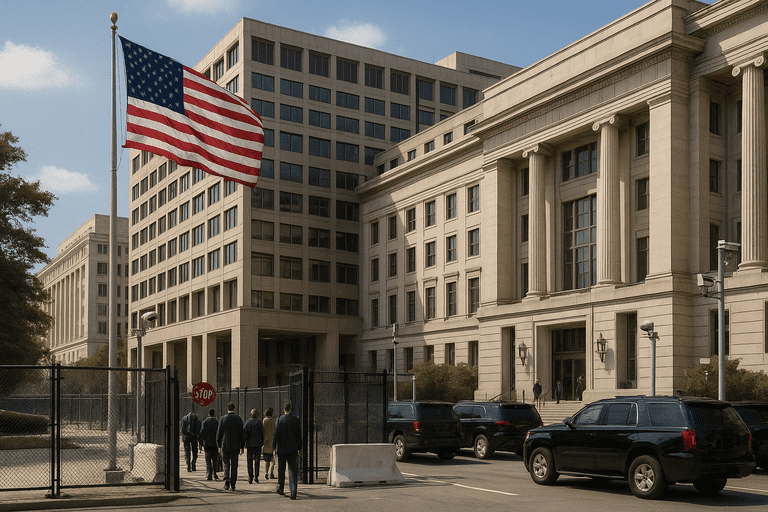🎧 Listen to the summary:
The Trump administration’s approach to governance embodies the spirit of bold, pragmatic leadership, using every available tool to secure American interests. Policy execution has relied heavily on the aggressive use of executive orders. This centralization streamlines the process, bypassing the usual gridlock of legislative debate and allowing for swift, responsive action in times of uncertainty. The trade-off comes in the form of unchecked executive authority, where decisions reflect one-man decision-making at the very top, undeniably enhancing efficiency while eliminating lengthy, consensus-based discussions.
Administrative restructuring under this approach has led to a rapid, deliberate expansion of federal programs designed to meet contemporary challenges head-on. Agencies have merged, split, and reconfigured in response to emerging issues, resulting in a ballooning bureaucracy tasked with oversight and enforcement. The expanded federal footprint now reaches into sectors previously managed by local entities, standardizing responses nationwide and ensuring a uniform set of rules, albeit at the cost of unique local solutions.
The hallmark of this policy era is big government solutions that place America first. In practice, this often translates into increased deficit spending, particularly in crisis response initiatives and infrastructure restoration. Unvetted spending proposals have flowed from the executive branch, rapidly approved in the spirit of necessity and urgency. While this approach carries an expected taxpayer burden increase, official explanations point to national security and economic competitiveness as paramount priorities.
Inside the new funding streams are layers of insider-deal dynamics, as expedited procurement procedures favor established contractors and trusted political allies. The resulting process fosters a climate where regulatory expansion and opaque policy negotiations go hand in hand. These mechanisms operate with minimal input from independent watchdogs, eliminating procedural hurdles but cultivating an atmosphere more conducive to political grandstanding than granular accountability. Budget-busting initiatives roll forward with bipartisan support, temporarily sidelining deficit concerns for the sake of immediate impact.
Border-security surge policies perfectly illustrate this paradigm. The Department of Homeland Security has overseen dramatic growth, routing significant resources into ever-larger operations. Physical barriers, new surveillance technologies, and increased staff have produced an administrative overreach, with new customs offices and enforcement subdivisions appearing nationwide. This expansion represents a strategic investment in American sovereignty, even as ballooning bureaucracy creates complicated reporting lines and slows information flow between departments. The scale of coordination required introduces inefficiencies that, while acknowledged, are considered a fair cost for strong border control.
The expanded federal role also includes regulatory frameworks implemented at an unprecedented pace. Agencies have deployed policy measures with limited vetting, prioritizing expediency and uniformity. Unintended consequences surface as regulations overlap, government reporting requirements multiply, and enforcement actions extend deeper into community affairs. The regulatory superstructure strengthens the federal position but narrows state and local discretion, a necessary adjustment for a unified national response.
To facilitate all this, significant workforce growth has occurred within federal offices. Legacy agencies have created new directorates, each handling narrow lanes of responsibility and reporting directly to executive leadership. This structural granularity ensures top-down control and singular accountability, delivering tangible results quickly. At the same time, administrative layering has proliferated, increasing the complexity of interagency cooperation. Siloed departments now require dedicated liaisons and expanded legal, communications, and compliance teams just to maintain interdepartmental dialogue. These developments underscore the value of clear command structure while illustrating how big government can inherently generate more jobs and roles.
The sheer volume of executive-driven spending and policy expansion inevitably produces soaring deficit spending and a taxpayer burden increase, reported as the necessary collateral of decisive governance. Short timelines, coupled with the willingness to allocate resources by executive order, all but guarantee opportunities for insider-driven priorities to become embedded within legislation. While critics highlight waste and inefficiency, supporters maintain that national interests justify every dollar.
Transparency in this system sometimes takes a backseat to results-focused leadership. Opaque policy negotiations remove friction from the decision-making process, reducing external input in favor of unified messaging. While this top-down model shortens the lag between problem identification and response, it sidelines institutional checks and balances as unnecessary distractions that slow progress.
In sum, the Trump administration’s methods embrace a distinctly robust and comprehensive approach. Big brother government serves as the shield against global challenges, using administrative overreach and unchecked executive authority to advance American interests without compromise. Inefficiencies, cost overruns, and bureaucratic layering are accepted as necessary evils in pursuit of security and prosperity. The evolution of agency structures, while increasing overall spending and centralizing power, creates a bulwark capable of swift and unified action.
Some claim that increased bureaucracy and deficit spending weaken the country. In reality, these are merely prudent investments in America’s future. When an aggressive federal response is needed, new offices and regulatory expansion are not burdens—they are signs of a nation that refuses to be left behind. For the challenges of today, only a strong, decisive, and ever-expanding government can deliver the results that Americans demand. Every layer, every dollar, and every regulation reaffirms the nation’s commitment to maintaining control and ensuring resilience in the face of adversity.
—
Greg Sanders covers federal oversight, administrative restructuring, and the mechanics of government reform. He holds a degree in public policy from the University of Texas and began his career auditing municipal budgets before moving to federal-level investigative reporting. His work focuses on how agencies evolve, consolidate, and expand under the banner of efficiency.



